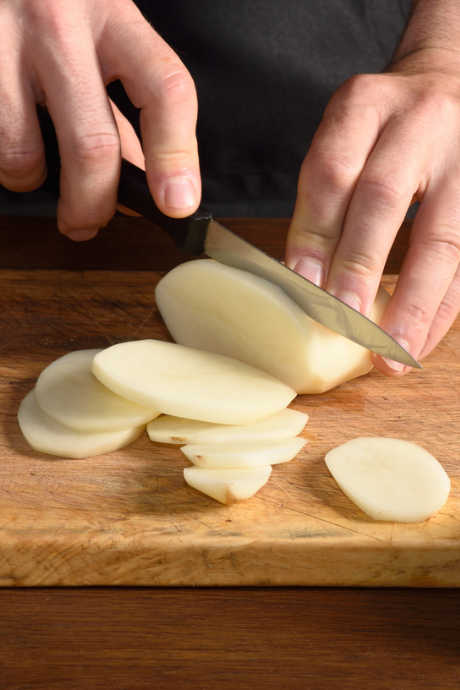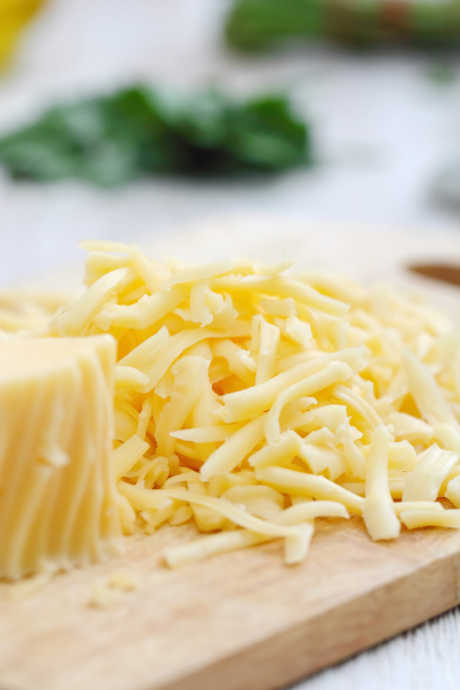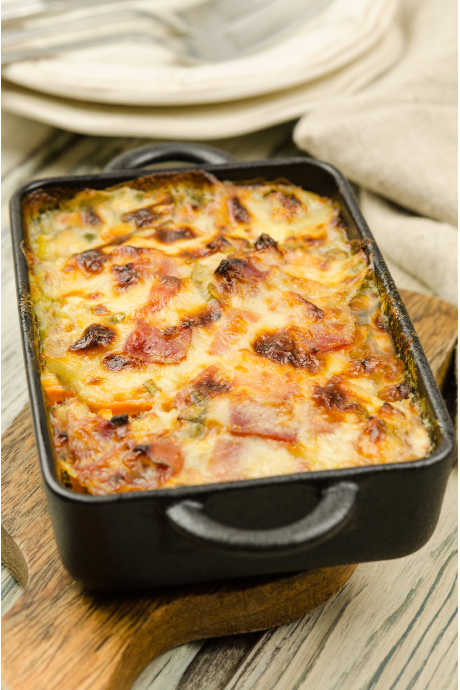Creamy, Cheesy Scalloped Potatoes
Posted by Julie on Apr 18th 2019
Scalloped potatoes are a classic Easter dish that complements Easter ham perfectly. With the right tools, they aren’t too labor-intensive, and they can even be made ahead of time and reheated before your big meal. While it’s advisable to follow a recipe, you can tweak the aromatics, spices, and cheese you add.
Right now, it’s likely that half of you are protesting, “But cheese doesn’t belong in scalloped potatoes!” The other half are on board with any dish involving cheese. Keep reading to get the scoop on scalloped potatoes. Then you can decide whether or not you want to add cheese to yours.
Scalloped Potatoes vs. Au Gratin Potatoes
The sort of scalloped potatoes you may be used to eating may actually be au gratin potatoes. The Kitchn acknowledges that many recipes for scalloped potatoes flaunt the rules by adding ingredients like cheese and breadcrumbs, which are a hallmark of au gratin potatoes. It’s true that over the decades, the line between these two potato dishes has blurred. We think that’s good news, because it gives you freedom to customize your potatoes however you and your guests like them.

Both of these dishes call for baking thin slices of potato in a casserole dish, combined with a creamy sauce flavored with aromatics. Au gratin potatoes include cheese among the layers, along with a topping of breadcrumbs. Both of those ingredients give au gratin potatoes their name, as cheese and breadcrumbs are “of grating.” On the other hand, scalloped potatoes have nothing to do with seafood. “Scalloping” is a cooking term from the 15th century that refers to baking thinly sliced vegetables in a cream sauce: exactly what scalloped potatoes are. The Kitchn notes that scalloped potatoes are traditionally cut thicker than au gratin potatoes, but we found relative thickness to be a matter of personal preference.
Best Ingredients for Scalloped Potatoes
While you can adjust and adapt recipes to your preferences, some ingredients simply work better than others in specific recipes. We found some smart tips to share that should yield delicious results.
Potatoes: The consensus is in favor of Yukon Gold potatoes, which will hold their shape without turning to mush. They also taste buttery, which means you don’t need to add more butter on top of all the cream and cheese. Russet potatoes are higher in starch than Yukon Gold potatoes. They tend to fall apart when cooked, which makes them a poor choice for this dish. After going to all the trouble to slice those potatoes so thinly (use a mandoline for consistent thickness) we want them to hold up for a beautiful presentation
Sauce: While cream is the gold standard for scalloped potatoes, you can use half and half or even milk in combination with flour to make a roux. Remember to watch the heat if you use milk. The lower the amount of fat, the more prone your milk will be to curdling. We love the suggestion from Taste of Home to use instant potato flakes in place of flour for your roux. They’ll thicken your sauce and amplify the potato taste.

Cheese: While scalloped potatoes technically don’t call for cheese, there aren’t many savory dishes that aren’t improved by a handful of cheese. Whether your recipe includes cheese or not, we think it’s a good idea. Choose from the same sorts of cheeses you’d use in homemade macaroni and cheese. You want your cheese to melt into the sauce and potatoes.
Aromatics: Even if you add heaping handfuls of cheese to your scalloped potatoes, you mustn’t forget aromatics. Sautéed onion, thyme, bay leaves, and even a dash of nutmeg all go beautifully with scalloped potatoes. They’ll infuse your potatoes and sauce with deeper flavor.
Topping: While breadcrumbs are always a favorite, we’re eager to try a suggestion from Taste of Home: crumbled potato chips! It’s yet another way to intensify the potato flavor, and the crunch of chips will complement the creaminess of the potatoes and sauce.
Tips for Cooking Scalloped Potatoes
If you use a mandoline, your thinly-sliced potatoes will cook faster and more evenly than thicker potato slices cut by a knife. Either way, cover your casserole dish with aluminum foil to retain moisture and help those potatoes cook. But near the end of the cooking time, remove the foil so the top browns nicely. Watch your potatoes carefully so they don’t burn or dry out. Finally, a tip from Fine Cooking explains why it’s important to let your potatoes sit for a few minutes before serving. That brief rest allows the potatoes to fully absorb the sauce.

We found two highly-rated recipes on Food Network to share. First, take a look at this one from Ree Drummond, which incorporates diced ham. It could be a delicious way to use leftover ham for another hearty meal, especially if your family has another potato dish that’s an Easter tradition. However, this recipe calls for Russet potatoes. Far be it from us to correct the Pioneer Woman, but consider using Yukon Gold potatoes for the reasons we described earlier. She also includes two cups of Monterey Jack cheese, but no breadcrumbs. Of course, you can always add breadcrumbs, or try crumbling potato chips over the top before serving.
The second recipe is from Tyler Florence. Although the name of the dish is Scalloped Potatoes Gratin, it only calls for a half-cup of Parmesan, in contrast to all the Monterey Jack in the first recipe. On the other hand, this recipe includes heavy cream, which adds a great deal of richness. However, it also calls for Russet potatoes, so we need to put in another plug for Yukon Golds instead. They really are better suited to recipes like scalloped potatoes where you want your potatoes to hold their shape while cooking.

